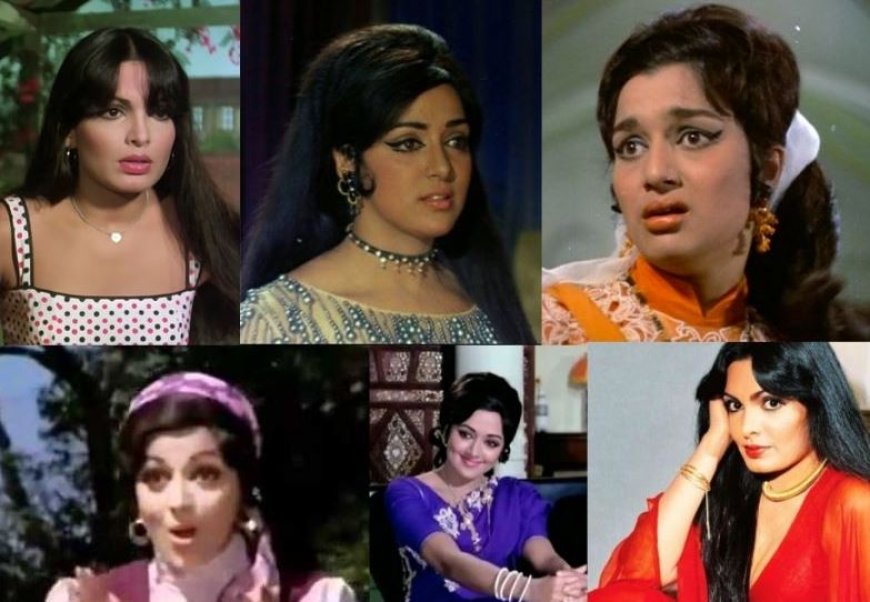Legendary fashion designers of Bollywood in the 70s and 80s

Ah, Bollywood! A nation of song, dance, drama, and of course, amazing fashion. But beyond the sparkling sarees and shimmering kurtas, lay the stories of the imaginative designers who poured life into these garments, influencing not only trends but the entire spirit of Bollywood in the 70s and 80s.
The 70s arrived with a frenzy of innovation. Gone were the days of completely traditional dress. Actresses like Hema Malini and Zeenat Aman became identified with daring shapes. Enter costume designers like Bhanu Athaiya and Monisha Khanna. Athaiya, a future Oscar winner, added a touch of the West to Bollywood with her renowned designs in "Sholay" (1975). Think Hema Malini's dhoti pants transformed on-screen femininity, a daring choice that questioned conventional norms and became a symbol of female empowerment. However, Khanna caught the era's loose spirit with her flowing chiffon sarees and fun polka-dotted skirts, as seen in "Bobby" (1973). These costumes wonderfully symbolized the emerging young culture and the demand for individualism sweeping the nation.
While the West affected trends, designers like Shanti Prasad ensured that Indian textiles remained at the core of Bollywood fashion. Prasad, famed for dressing the great Mumtaz, is credited with popularizing the "Mumtaz Salwar Kameez," a style that transcended the cinema and became a wardrobe staple for innumerable ladies. The dress, marked by its fitted form and elaborate embroidery, displayed the beauty of Indian craftsmanship while offering a comfortable and functional alternative to the traditional saree. Prasad's work not only altered everyday clothing but also served as a testament to the enduring popularity of Indian textiles.
As the 80s dawned, a new crop of designers arose, adapting to the growing interests of the audience. This decade they have witnessed a focus on glamor and glamour, matching the ambitious ethos of a nation on the edge of economic liberalization. Enterprises like "The Cottage Emporium," founded by the redoubtable combination of Wahida Rehman and Rita Dhody, became synonymous with lavish lehengas and elaborately decorated sarees. Their masterpieces, glittering with gems and delicate stitching, were a feast for the eyes. Actresses like Sridevi and Rekha, known for their larger-than-life on-screen personas, relished in these sparkling creations. Sridevi's iconic yellow chiffon saree in "Chandni" (1989) and Rekha's embroidered crimson lehenga in "Umrao Jaan" (1981) remain imprinted in popular memory, a monument to the ability of costume design to heighten performance.
However, the 80s weren't only about bling. Jackie Shroff, the reigning heartthrob, brought a new brand of cool to menswear with his leather jackets and rugged denim, typically dressed by costume designers like David Lobo. Shroff's effortless style, a stark contrast to the gaudy clothes of the heroes of the 70s, appealed to a new audience. It was a reaction against traditional conceptions of masculinity, exhibiting a more rough and individualistic image. Actresses like Shabana Azmi, famed for their forceful depictions, found their sartorial voice with designers like Hemantkumar. Hemantkumar understood the potential of clothing to improve performance, developing dramatic shapes that resonated with the shifting roles of women in Hindi cinema. In films like "Arth" (1982), Azmi's character, a mistreated wife, was typically featured in muted tones and basic yet structured attire, representing her inner strength and tenacity.
This period also witnessed the development of designer duos. Abu Jani and Sandeep Khosla, a partnership that continues to reign supreme, started their adventure in the late 80s. Their creations, a blend of traditional Indian workmanship with a modern style, earned favor with stars like Parveen Babi and Dimple Kapadia. Jani & Khosla's works were a breath of new air, offering a refined perspective on Indian traditional dress. Their complex embroidery methods and use of luxury fabrics developed a unique style that blurred the barriers between tradition and contemporary.
While some designers focused on the leading ladies, others made a place for themselves in menswear. The late Basu Chatterjee noted for his realistic representations of middle-class India, employed costume design to create a sense of authenticity. His actors, typically regular individuals navigating everyday life, were dressed in modest yet fashionable kurtas and dhotis, representing the everyday fashion of the day. Chatterjee's subtle style anchored his films in reality, ensuring the clothing matched the plot rather than overshadowing it.
Today, when we relive old Bollywood flicks, we're not just attracted by the stories, but also by the ageless elegance of the clothing. These clothes are a monument to the vision and expertise of the designers who, with needle and thread, weaved a golden thread of fashion history into the very fabric of Bollywood.











































